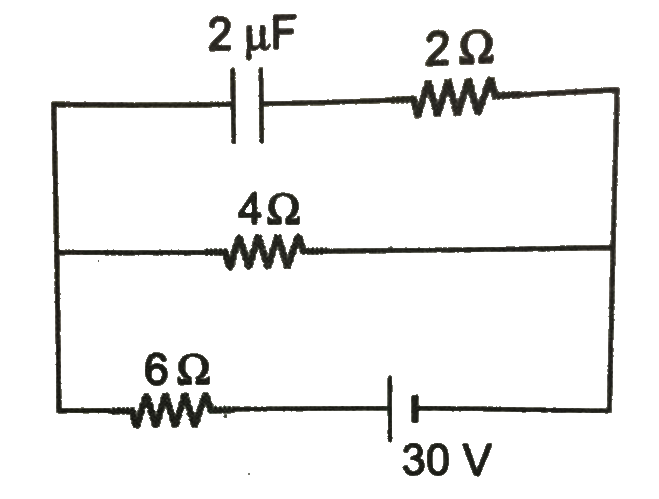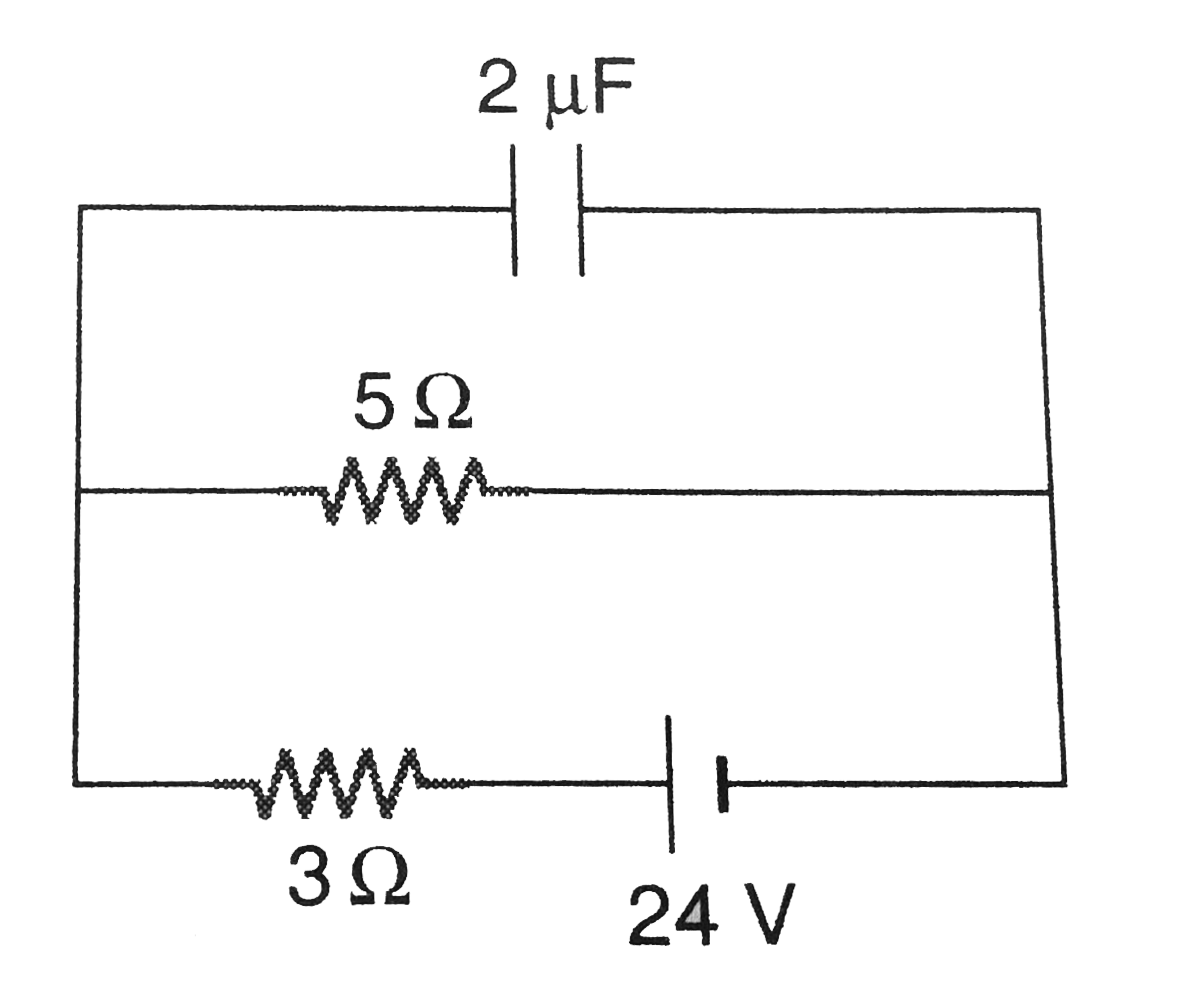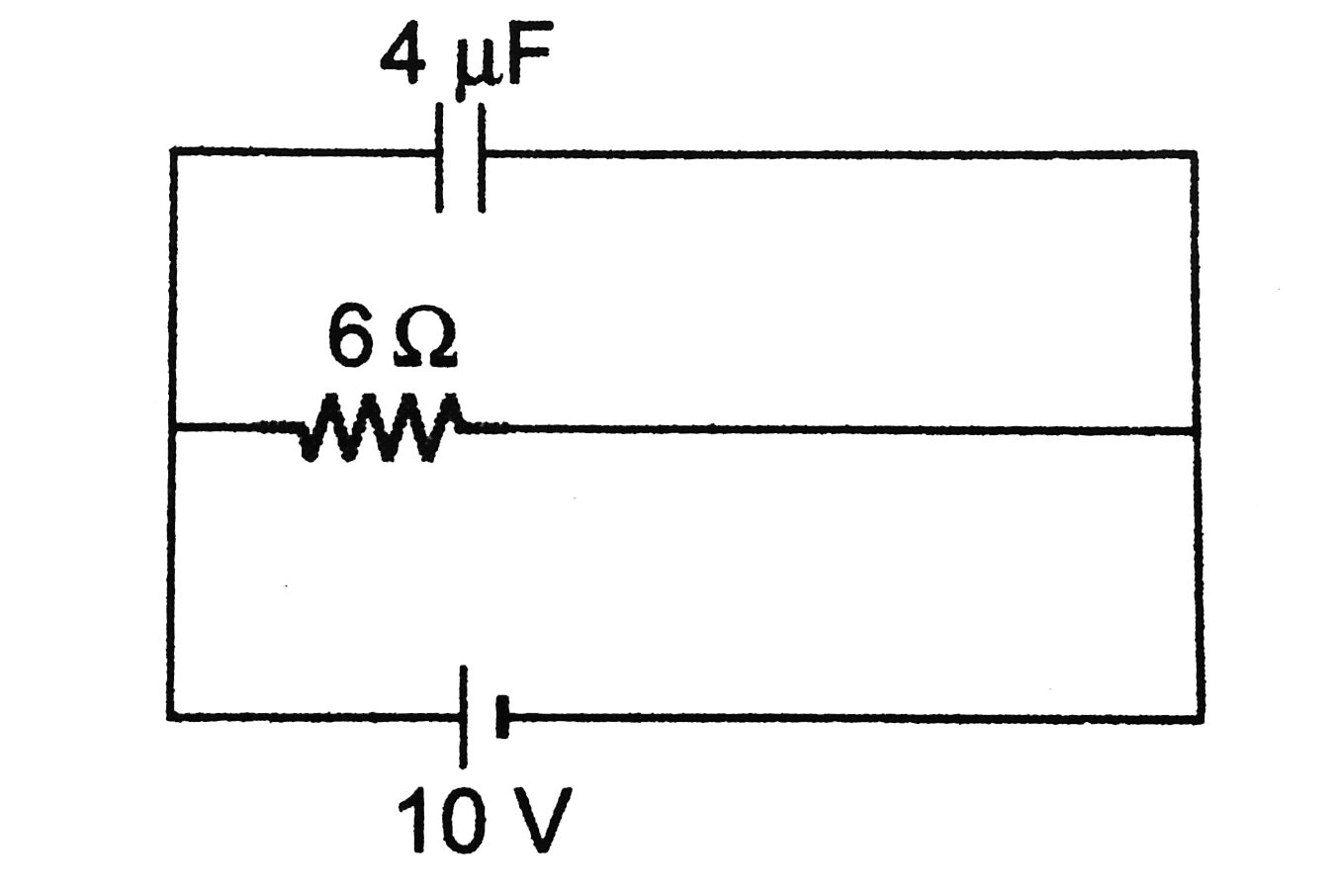A charged capacitor is connected to an inductor . At a particular instant, energy stored in inductor is 8/9 times of initial energy stored In capacitor . What is the ratio of initial charge on capacitor to that with instantaneous charge on capacitor ?
The correct Answer is:3
To solve the problem, we need to analyze the energy stored in the capacitor and the inductor at different instances.
1. Initial Energy in the Capacitor:
The initial energy stored in the capacitor (E₀) can be expressed as:
E0=Q2i2C
where Qi is the initial charge on the capacitor and C is the capacitance.
2. Energy in the Inductor at a Particular Instant:
At a particular instant, it is given that the energy stored in the inductor (E_L) is:
EL=89E0
3. Energy Conservation:
Since the total energy in the system is conserved, the energy in the capacitor at that instant (E_C) can be calculated as:
EC=E0−EL=E0−89E0=19E0
4. Energy in the Capacitor at Instant:
The energy stored in the capacitor at that instant can also be expressed in terms of the instantaneous charge Qf:
EC=Q2f2C
Setting this equal to the expression we derived for EC:
Q2f2C=19E0
5. Substituting Initial Energy:
Substitute E0=Q2i2C into the equation:
Q2f2C=19(Q2i2C)
6. Simplifying the Equation:
Cancel 12C from both sides:
Q2f=19Q2i
7. Finding the Ratio of Charges:
Taking the square root of both sides gives:
QiQf=3
Final Answer:
The ratio of the initial charge on the capacitor to the instantaneous charge on the capacitor is:
QiQf=3
The initial energy stored in the capacitor (E₀) can be expressed as:
E0=Q2i2C
where Qi is the initial charge on the capacitor and C is the capacitance.
At a particular instant, it is given that the energy stored in the inductor (E_L) is:
EL=89E0
Since the total energy in the system is conserved, the energy in the capacitor at that instant (E_C) can be calculated as:
EC=E0−EL=E0−89E0=19E0
The energy stored in the capacitor at that instant can also be expressed in terms of the instantaneous charge Qf:
EC=Q2f2C
Setting this equal to the expression we derived for EC:
Q2f2C=19E0
Substitute E0=Q2i2C into the equation:
Q2f2C=19(Q2i2C)
Cancel 12C from both sides:
Q2f=19Q2i
Taking the square root of both sides gives:
QiQf=3
The ratio of the initial charge on the capacitor to the instantaneous charge on the capacitor is:
QiQf=3
Topper's Solved these Questions
- ALTERNATING CURRENT BOOK - MODERN PUBLICATIONCHAPTER - ALTERNATING CURRENT EXERCISE - COMPETITION FILE EXEMPLAR PROBLEMS (OBJECTIVE QUESTIONS ) (Multiple choice question (Type ) )
13 Videos
- ALTERNATING CURRENT BOOK - MODERN PUBLICATIONCHAPTER - ALTERNATING CURRENT EXERCISE - CHAPTER PRACTICE TEST
16 Videos
- ALTERNATING CURRENT BOOK - MODERN PUBLICATIONCHAPTER - ALTERNATING CURRENT EXERCISE - COMPETITION FILE ASSERTION REASON TYPE QUESTIONS
10 Videos
- ATOMS BOOK - MODERN PUBLICATIONCHAPTER - ATOMS EXERCISE - Chapter Practice Test
16 Videos
Similar Questions
Knowledge Check
Energies stored in capacitor and dissipated during charging a capacitor bear a ratio
A1:1B1:2C1:1/2D2:1In a charged capacitor, the energy is stored in
Athe negative chargesBthe positive chargesCthe field between the platesDboth 'a' and 'b'In a charged capacitor the energy is stored in
Apositive chargeBboth in positive and negative chargeCthe electric field between the platesDthe edges of the capacitor plates
Find the charge stored in the capacitor.

View SolutionA charged 8mF capacitor having charge 5mC is connected to a 5mH inductor. What is :
iv) the magnetic energy in the inductor at the instant when charge on capacitor is 4mC?
View SolutionThe capacitance of a charged capacitor is C and the energy stored in it is U. What is the value of charge on the capacitor?
View SolutionA battery of 10V is connected to a capacitor of capacity 0.lF. The battery is now removed and this capacitor is connected to a second uncharged capacitor. If the charges are distributed equally on these two capacitors, find the total energy stored in the two capacitors. Find the ratio of final energy to initial energy stored in capacitors.
View SolutionThe electrostatic energy of 4×10−6 J is stored in a capacitor at 100 V. What is the charge on the capacitor?
View Solution


